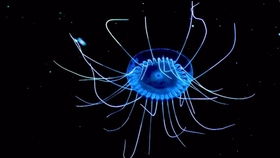The Art of Wild Fishing: Crafting Effective Tips and Techniques
Fishing, an age-old pastime, has always been a source of relaxation and a means to enjoy the tranquility of nature. Among the various forms of fishing, wild fishing, or angling in its purest form, holds a special charm. Whether you are a seasoned angler or a beginner looking to get started, mastering the art of wild fishing can transform your experience. In this article, we delve into the world of wild fishing and provide you with tips and techniques that will help you craft effective fishing tips for your audience.
Understanding Wild Fishing
Wild fishing, often referred to as angling, is the practice of fishing in natural water bodies such as rivers, lakes, and streams. It requires a different set of skills and knowledge compared to other forms of fishing, like pond fishing or lake fishing, where the environment is often more controlled.
Crafting Your Tips and Techniques
Choose the Right Equipment
- Rod and Reel: Select a rod and reel that are appropriate for the type of fish you are targeting. For instance, a lightweight rod and reel for panfish, and a heavier setup for larger species like bass or trout.
- Line: Use the right line for the fish and conditions. Monofilament is versatile and floats well, while fluorocarbon is nearly invisible underwater and has a lower stretch.
Selecting the Perfect Location
- Research: Study the water body you plan to fish. Look for areas with a history of fish activity, such as deep holes, weed beds, or current breaks.
- Patience: Remember that the best spots are often found by trial and error. Don't be afraid to move around and explore different areas.
Mastering the Cast
- Practice: Spend time practicing your casting technique. A good cast is essential for presenting your bait or lure effectively.
- Accuracy: Aim for accuracy over distance. It's better to cast short and hit your target than to cast far and miss.
Bait and Lure Selection

- Natural Bait: Use natural bait like worms, minnows, or insects if you're targeting species that are naturally attracted to them.
- Artificial Lures: For more selective fish, artificial lures can be more effective. Experiment with different types and colors to see what works best.
Understanding Fish Behavior
- Feeding Patterns: Study the feeding patterns of the fish you're targeting. This includes understanding when they are most active and what they are likely to be eating.
- Weather Conditions: Be aware of how weather conditions affect fish behavior. Wind, temperature, and water clarity can all impact where and how fish will be located.
Reading the Water
- Surface Activity: Look for surface activity that might indicate fish are feeding nearby.
- Structure: Observe the structure of the water body. Rocks, logs, and vegetation can provide hiding spots for fish.
Conservation and Ethics
- Respect the Environment: Always follow the rules and regulations of the area you are fishing in. This includes catch and release practices for protected species.
- Leave No Trace: Take care to leave the area as you found it, respecting the natural habitat for future anglers.
Safety First
- Weather Check: Always check the weather forecast before heading out. Be prepared for sudden changes in conditions.
- Emergency Preparedness: Carry a first aid kit, a whistle, and a cell phone, especially if you are fishing alone or in remote areas.
Conclusion
Crafting effective fishing tips for wild fishing involves a blend of practical knowledge, respect for nature, and a deep understanding of the fish you are targeting. By focusing on the right equipment, selecting the perfect location, mastering your casting technique, understanding fish behavior, and practicing conservation ethics, you can enhance your wild fishing experience and share valuable insights with fellow anglers. Whether you are writing for a blog, a fishing magazine, or a social media platform, remember to convey your tips and techniques in a way that is engaging, informative, and easy to follow. Happy fishing!












